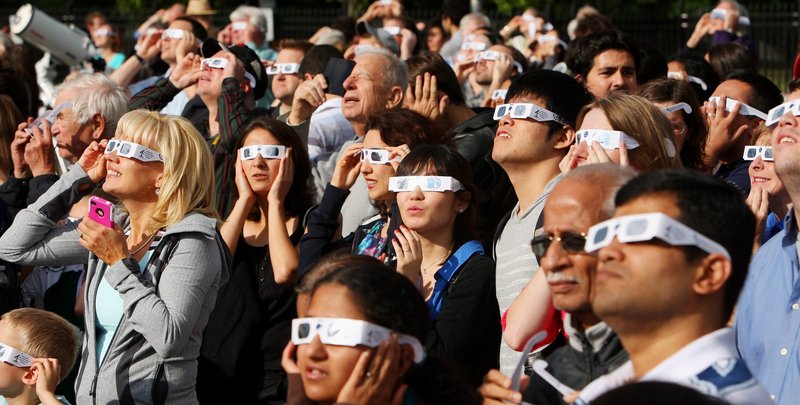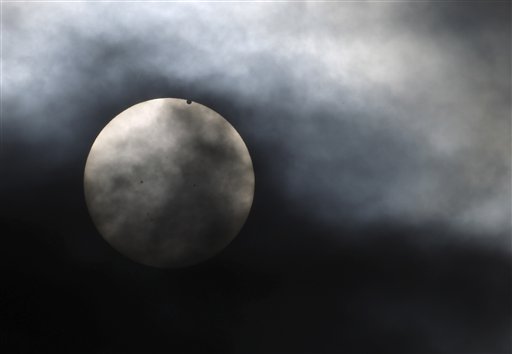HONOLULU — None of us will likely see Venus pass, like a moving beauty spot, across the face of the sun again.
From the U.S. to South Korea, people around the world turned their attention to the daytime sky on Tuesday and early today in Asia to make sure they caught the rare sight of the transit of Venus. The next one won’t be for another 105 years.
“If you can see the mole on Cindy Crawford’s face, you can see Venus,” Van Webster, a member of the Los Angeles Astronomical Society, told anyone who stopped by his telescope for a peek on Mount Hollywood.
For astronomers, the transit wasn’t just a rare planetary spectacle.
It was also one of those events they hoped would spark curiosity about the universe and our place in it.
Sul Ah Chim, a researcher at the Korea Astronomy and Space Science Institute in South Korea, said he hoped people see life from a larger perspective, and “not get caught up in their small, everyday problems.”
“When you think about it from the context of the universe, 105 years is a very short period of time and the Earth is only a small, pale blue spot,” he said.
In Los Angeles, throngs jammed Mount Hollywood where the Griffith Observatory rolled out the red carpet for Venus.
The last time the city witnessed a Venus transit was 130 years ago in 1882. A 2004 transit was not visible from the western U.S.
Telescopes with special filters were set up next to the lawn and people took turns peering at the sun before and during the transit. Astronomers and volunteers lectured about the rarity of a Venus pass to anyone who would listen.
Minutes before Venus first touched the outer edge of the sun, Sousa’s “Transit Of Venus March” blared through. The crowd turned their attention skyward.
Send questions/comments to the editors.




Success. Please wait for the page to reload. If the page does not reload within 5 seconds, please refresh the page.
Enter your email and password to access comments.
Hi, to comment on stories you must . This profile is in addition to your subscription and website login.
Already have a commenting profile? .
Invalid username/password.
Please check your email to confirm and complete your registration.
Only subscribers are eligible to post comments. Please subscribe or login first for digital access. Here’s why.
Use the form below to reset your password. When you've submitted your account email, we will send an email with a reset code.